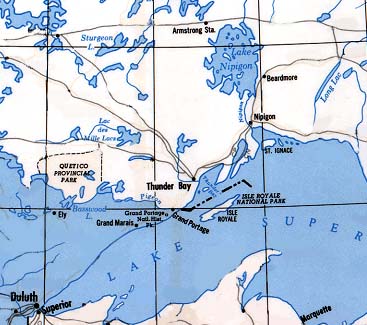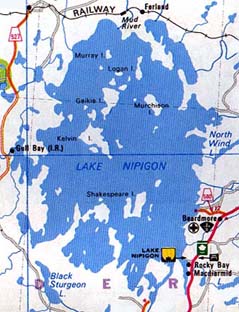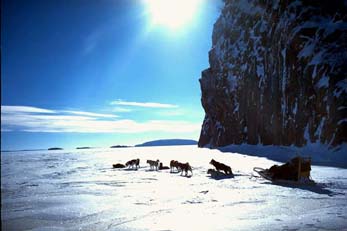Table of Contents
*
Featured Inuit Dog Owner: Brian and Linda Fredericksen
*
Lake Nipigon - Solo
*
Inuit Dogs in New Hampshire, Part II
*
The Inuit Dogs of Svalbard
*
Update: Uummannaq Children's Expedition
*
Update: Iqaluit Dog Team By-Law is Official
*
Poem: Instinct
*
The Homecoming: Epilogue
*
Product Review: Sock Sense
*
Tip for the Trail: Wet Equals Cold
*
Janice Howls: More Than Meets the Eye
*
Page from a Behaviour Notebook: Hunting
Navigating This
Site
Index of articles by subject
Index
of back issues by volume number
Search The
Fan Hitch
Articles
to download and print
Ordering
Ken MacRury's Thesis
Our
comprehensive list of resources
Talk
to The Fan
Hitch
The Fan Hitch
home page
ISDI
home page
Editor: Sue Hamilton
Webmaster: Mark Hamilton
Contents of The Fan Hitch Website and its publications are protected by international copyright laws. No photo, drawing or text may be reproduced in any form without written consent. Webmasters please note: written consent is necessary before linking this site to yours! Please forward requests to Sue Hamilton, 55 Town Line Rd., Harwinton, Connecticut 06791, USA or mail@thefanhitch.org

Lake Nipigon - Solo
by Brian Fredericksen
Late January 2001 found the ice covered lakes in Northern Minnesota full of knee deep slush from the early accumulations of snow. Dog sled travel was laborious and wet and I wanted to get my dogs in shape for a March Hudson Bay trip. So rather then slog around in northern Minnesota I planned a solo trip to Lake Nipigon in southern Ontario.
Called the seventh Great Lake, Lake Nipigon is about seventy by fifty miles in size and the islands within the lake are large enough to have lakes of their own. Due to the volume of water in Nipigon it typically does not freeze over completely until early January. So the early season snow is not able to accumulate and create the slush which is so common in southern Canadian lakes. The wind is also a factor on this big body of ice and it creates hard packed conditions similar to the Arctic.
I had been to Lake Nipigon twice before with Lonnie Dupre and some other dog mushers when he was training for his Greenland expedition so I was familiar with the lake and a solo trip did not seem too dangerous.
I arrived near Beardmore, Ontario late on Saturday evening February 17 and slept in my custom dogbox/sleeper with my nine dog team on a plowed truck pullout. The dog team represented for me the culmination of over a decade of mushing and I had a nice range of dogs from two years old to one eight year old veteran. They had power, speed and there was not a slack tugline in the bunch.
Sunday morning I drove into town and stopped at the only restaurant, the Finlander. The Finlander, with its rustic wood floors with a nice field stone fireplace, is in a turn-of-the-century mining building that was actually moved into the town. There were some locals sitting at a large table and, seeing the dog truck out front, invited me over to their table to see what I was up to. They were quite interested in my plans and I went out to the truck and brought in my map so we could discuss the various aspects of winter travel on the lake. The most affable in the group, John Peters, had many suggestions to make and several good stories to tell. I left feeling like this was one town I would definitely make a point to spend some time visiting in the future.
Lake Nipigon is a jewel of a lake as far as the fish habitat is concerned. Large fifty-plus pound lake trout roam the deep waters and the lake is also known for its large brook trout which can easily reach eight pounds. A limited number of commercial fishing permits are issued and several of the locals work on the lake as part of this industry.
I parked on the east shore of the lake at the Poplar Point Park landing which is the only access in the winter. The parking lot is plowed and is used by commercial fishermen. The weather was nice, around 10°F, and sunny. I unloaded my sled and started sorting through my gear. Soon half of the town was passing through the lot; apparently word spreads fast in a town of 200 people.
I hooked up the nine dog team in front of an audience of eight people and was quickly bouncing across a wind packed surface with maybe nine inches of snow. This was exactly what I was looking for when I left the north woods of Minnesota behind. The going was good and we made the twelve miles to Flatland Island in about 3 hours and then followed a well worn wolf track trail around the island to camp on the north side to get out of a rising south wind. I had been driving late the evening before so I slept quite well and awoke to the sound of ravens outside the tent. I was on the leeward side of the island and the lack of wind combined with the sunshine made for a great morning. From Flatland Island I could see King's Head on Shakespeare Island and the rough ice and pressure ridges between. This portion of the lake has the most current running through it and is the least stable area of ice. I found a foot of ice, which is plenty for travel, but I would later find ice three to four feet thick on the northern portion of the lake where the water is more static.

I headed north from my camp to Endakwis Island which is near Kelvin Island, the largest island on the lake. The dogs were running well as the conditions were ideal: hard packed drifts where hardly a sled track was left behind. My GPS showed we were averaging 5.8 mph and we easily made the twenty miles to Endakwis. The wind had switched around and was now blowing in my face from the north and it looked like a change in the mild weather was coming. My wife Linda had given me a Bruton altimeter as an advance birthday gift. The little device proved quite useful on this trip as it provides a barometer reading in addition to temperature and wind speed. I took a reading of 3°F at sunset with a barometer reading of 29.28.
Tuesday morning broke with a gale blowing full force from the northwest. I was again on the leeward side of the island which made breaking camp and the hook up tolerable. I must admit I was not prepared for the full force of the 40 mph wind I hit when I came around the side of the island. My route was essentially a clockwise one around the lake which left Kelvin and Geike Islands in the center of the "watch". This day's travel was from seven AM to nine PM which took me through the most exposed area of the lake ice. The winds come out of Wabinosh Bay where the tall cliffs act as a wind tunnel. Within an hour of bucking the wind, I had to pull into a bay on Kelvin Island to add more insulating layers. My lead dog Bingo had to take a zigzag route forward so that the team could avoid having the wind directly in their faces the whole time. The lake ice here was windswept with patches of bare ice so even with the head wind we made fifteen miles to Outer Barn Island where we camped early due to the high winds. I wanted to spend a night below Outer Barn Island anyhow as the 700 foot cliffs made for a spectacular setting. As I set up the tent on the leeward side of the island I watched fifty foot tall snow cyclones race out of the wind tunnel and head southwest across the ice in front of me. It was a spectacular display of wind and I felt we had gotten a fair taste of what Lake Nipigon had to throw at us. That evening the sky cleared, the wind died off a bit and the northern lights danced overhead. I peered out from the tent and was surprised to see the dogs sitting up quietly on their haunches looking skyward. Apparently they too were in awe of the moment.

Rest time at Barn Island Fredericksen photo
The next day proved to be my longest as I made twenty-three miles lasting from 9 AM to 1 AM on my rotation around the lake. Out of its windswept portion as we reached the north end of the lake, the hard pack gave way to soft punchy snow. The dogs were looking back with tongues hanging low when we came across a well worn ski-doo trail which was being used by Frank Goodman. I met him and his crew of two as I pitched camp. He proudly told me he had been commercial fishing on the lake for 47 years and had been out at fish camp for 53 days straight. He recollected how in the early days before snow machines his dad and he had used sled dogs to haul their nets and fish on the lake. He seemed impressed that I was out on dog sled running some of his old routes. The two younger guys got out their cameras and took picture of my team and camp.
The barometer fell overnight to 28.88 and I awoke to a minor white-out which ended in a hazy fog. Now 41 GPS miles from the landing, I headed south using a compass in the haze and fog to find my way down to the "gap" on Mckellar Island. As I pitched camp the sky cleared and I had a gorgeous sunset with a view of Humboldt Bay to my south and east. This portion of the lake has less exposed rock and more rolling terrain and it reminded me of photos of Alaska with the ice snow and hills. I found a set of fox tracks coming off the island and heading across the 8 miles of ice to the shore of the bay and pondered why a fox would risk being caught out on the ice by a pack of wolves.
My last day on the trail was warm and sunny. The twenty-five miles and temperatures took their toll on the dogs. But they did well and we covered the distance in five hours, counting two rest stops. As I hit the landing I was proud of the team. We had clocked 130 miles in five and a half days and I felt for the first time this winter that my team was ready for Hudson Bay in March. While it had been a snowy winter, I had not really put many long distance miles on the team. Slogging through deep northern snow was not the kind of training I wanted for my dogs as preparation for a 400 mile Hudson Bay trip where I expected to find some hard pack conditions.
In the end, the Hudson Bay trip to Arviat turned out to be much more difficult than we had planned. The Nipigon solo trip proved to be the best run of the winter as we made plenty of easy miles and the dogs were not exposed to such brutal weather and trail conditions. In fact this trip goes down in my journal as one of the best runs with the dogs I have ever made.
The whole trip was a real adventure, too, since I drove home in what turned out to be the biggest snow fall of the season. Northern Minnesota received twenty inches of snow which left the northland lake area virtually impassable with slush and water until later in March.
I highly recommend Lake Nipigon as a destination for ISDI members. You'll find subacrtic conditions at times in an easily accessible location just two hours north of Thunder Bay. The scenery and people are just great.